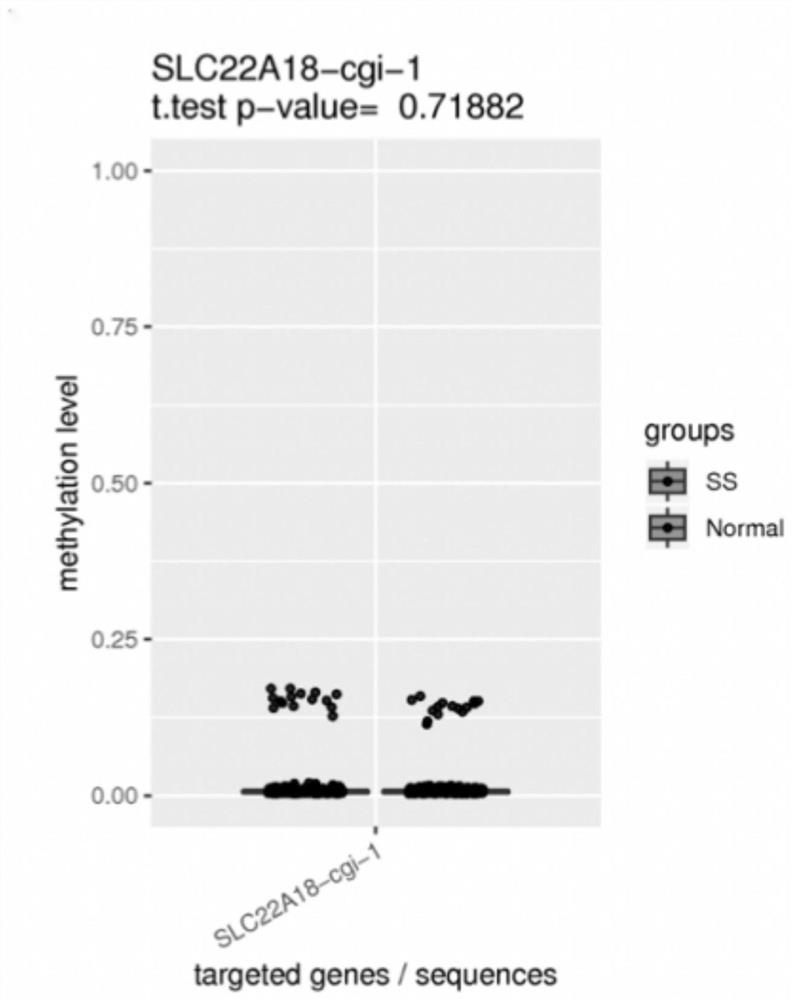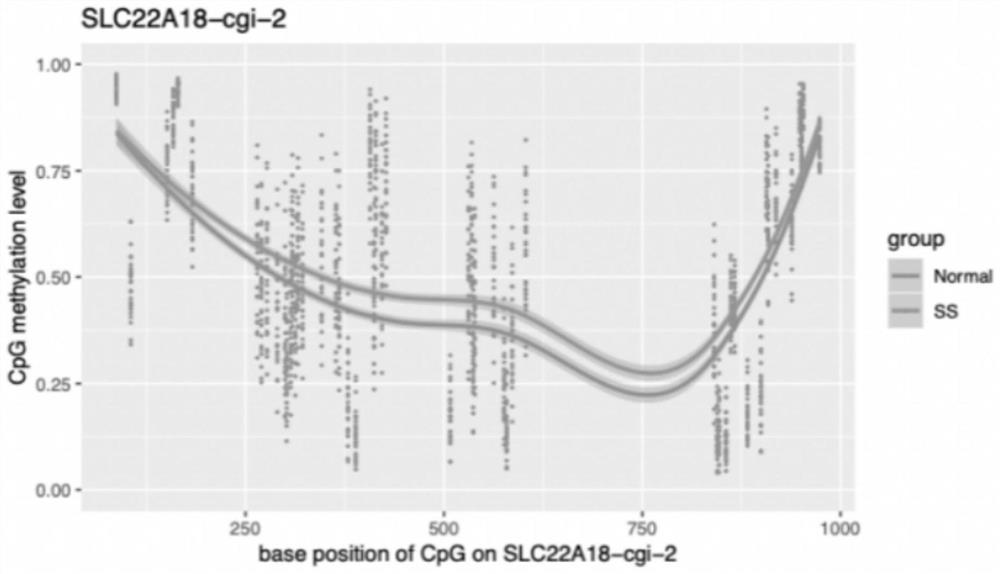Detection method of targeting membrane protein methylation as imprinting gene syndrome marker
A detection method, methylation technology, applied in the field of medical detection, can solve the problem of membrane protein SLC22A18 function inhibition, etc., and achieve the effect of cost reduction and high sensitivity
- Summary
- Abstract
- Description
- Claims
- Application Information
AI Technical Summary
Problems solved by technology
Method used
Image
Examples
Embodiment 1
[0033] This embodiment discloses a detection method for targeting membrane protein methylation as an imprinted gene syndrome marker, including the following steps:
[0034] Step 1. Extract the cell-free DNA from whole blood. After passing the test, it is treated with bisulfite and used as an amplification template; the bisulfite treatment changes the unmethylated C in the DNA sample into U, and the methylated The C remains the same.
[0035] Step 2: Design and synthesize tag primers targeting membrane protein genes; the tag primers include a 5'-end modification group with a molecular tag, a nucleotide fragment for matching the amplification template, and a 3'-end modification group.
[0036] Step 3: Mix the amplification template and index primers for PCR amplification, connect to the special index sequencing adapters of the illumina sequencing platform, and construct amplicon libraries with different labels; the PCR amplification reagents include high-fidelity U-base-resistan...
Embodiment 2
[0046] Three comparison groups were selected, sample collection, synthesizing tag primers, building amplicon libraries, and on-machine sequencing were performed according to the detection method of Example 1, and then analyzed by bioinformatics to obtain the box plots and bee plots of the three comparison groups. group graphs (such as Figure 1-6 ) shown.
[0047] Differential analysis was carried out between each comparison group according to the test results, and the test results were consistent with clinical information.
PUM
 Login to View More
Login to View More Abstract
Description
Claims
Application Information
 Login to View More
Login to View More - R&D
- Intellectual Property
- Life Sciences
- Materials
- Tech Scout
- Unparalleled Data Quality
- Higher Quality Content
- 60% Fewer Hallucinations
Browse by: Latest US Patents, China's latest patents, Technical Efficacy Thesaurus, Application Domain, Technology Topic, Popular Technical Reports.
© 2025 PatSnap. All rights reserved.Legal|Privacy policy|Modern Slavery Act Transparency Statement|Sitemap|About US| Contact US: help@patsnap.com



